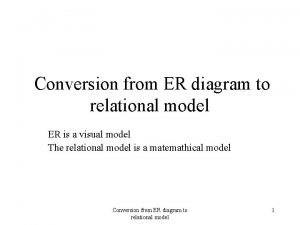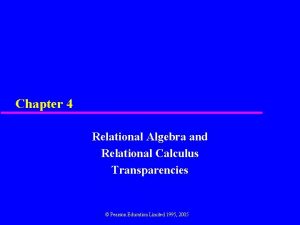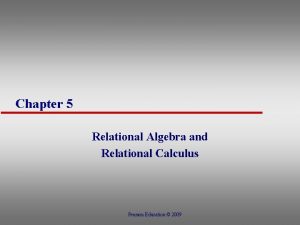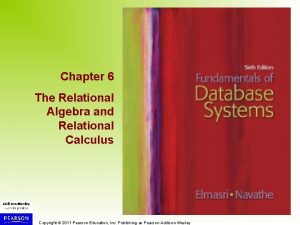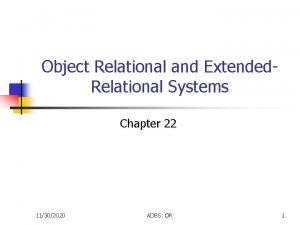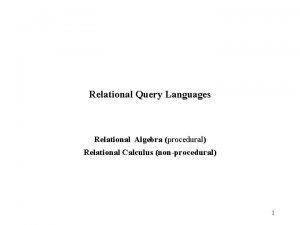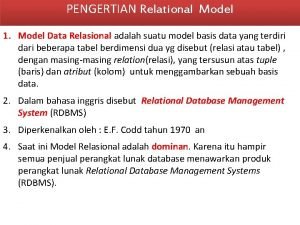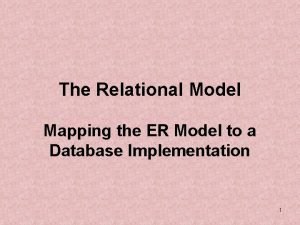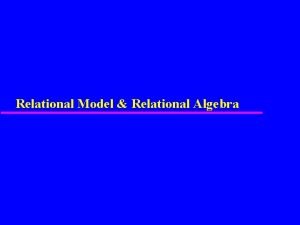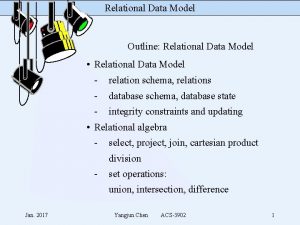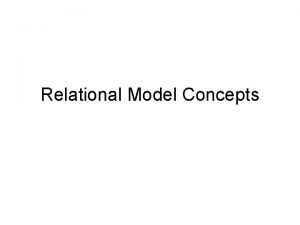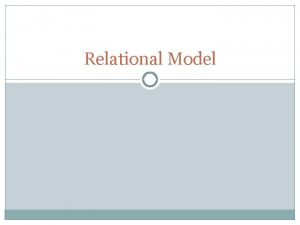Conversion from ER diagram to relational model ER







- Slides: 7

Conversion from ER diagram to relational model ER is a visual model The relational model is a matemathical model Conversion from ER diagram to relational model 1

Database development as part of systems development • Analysis phase – Draw an ER-diagram • Design phase – Convert ER-diagram to relational model. – Check if the relations are sufficiently normalized. • Realization phase – Create tables in a DBMS. Conversion from ER diagram to relational model 2

Procedure for conversion from ER to relational model • Strong entity types – have their own relation with all the singlevalued attributes. – composite attributes: Simple attributes (“leaves”) in the relations. – primary key transferred from ER to the relation. Conversion from ER diagram to relational model 3

Binary relationships 1: 1 • Binary 1: 1 relationships (rare) – data from the relationship (if any) integrated into one of the related entities [your choice]. – one of the related relations gets a foreign key to the other [your choice: easy to find a “way” from on to the other, but not vice versa] – 1: 1 relations are rare in ER-diagrams {they are usually modeled as a single entity } Conversion from ER diagram to relational model 4

Binary relationships 1: N • Binary relationships with cardinality 1: N – data from the relationship (if any) integrated into the relation with the “N” – The “N” relation has a foreign key to the “ 1” relation. Conversion from ER diagram to relational model 5

Binary relationships N: M • Binary relationships with cardinality N: M – Own relation with 2 foreign keys (1 for each of the relation entities) – Date (like timestamps, etc. ) on the relationships goes into the relation. Conversion from ER diagram to relational model 6

Multi valued attributes • Multi valued attributes – Own relation – Foreign key to the “owning” relation. Conversion from ER diagram to relational model 7
 Er diagram to relational model conversion
Er diagram to relational model conversion The limited tuple relational calculus equals:
The limited tuple relational calculus equals: Relational algebra to tuple relational calculus
Relational algebra to tuple relational calculus Relational algebra aggregate functions examples
Relational algebra aggregate functions examples Object relational and extended relational databases
Object relational and extended relational databases Relational algebra and relational calculus
Relational algebra and relational calculus Apa itu relational model
Apa itu relational model Mapping of er model to relational model
Mapping of er model to relational model
